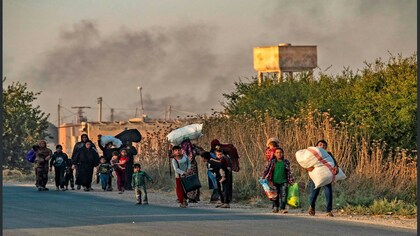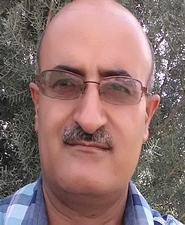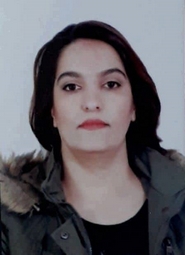Cold War returns to Mideast
19:41 - 11 December 2011

There are growing signs of a renewed Cold War between Russia and the United States over the future paths of Iran and Syria in the Middle East.
For years, Iran has been pursuing both a nuclear program and the development of long-range missiles while building a heavy-water reactor for \"research purposes\" that is also capable of producing fuel for a plutonium bomb.
Iran\'s Islamic rulers have spent millions to illegally purchase enrichment technology and nuclear-weapon designs through Pakistani nuclear scientist and black marketeer A. Q. Khan.
For years Iran tried to conceal these contacts until its cover was blown by Libya when it began co-operating with the West.
Indeed, a revolutionary Iran armed with nuclear weapons and long-range missiles is a nightmare not only for Israel but also for Turkey and Iran\'s non-nuclear Arab neighbours.
These states, especially Saudi Arabia, feel they became more existentially threatened by Iran than Israel. Even the European security profile will change if Iran possesses nuclear warheads and long-range missiles.
These developments have increased the danger of war in the coming years. Israeli Defence Minister Ehud Barak has said the West has nine months to act before Iran becomes nuclear. U.S. officials dispute that evaluation.
Yet, and despite conflicting press reports, there is no real disagreement between Israel and the U.S. on the issue.
A joint American-Israeli committee that deals with strategic dialogue ended its deliberations in Washington on the weekend. The Israeli team was headed by Danny Ayalon, deputy foreign minister, and included military planners and civilian strategists. Their deliberations remain secret.
One can assume, however, that a policy of economic sanctions and diplomatic pressure will remain a priority in the coming months even though no one in Israel believes such measures will prevent Iran from reaching its nuclear goal.
Instead, attention is focusing on growing American-Russian tension regarding Syria and Iran. Both countries consider the struggle against Iran and the effort to dislodge the pro-Iranian Syrian regime as one struggle. Therefore, they moved to protect their conflicting interests in both countries.
Following a series of mysterious explosions in Iranian missile and nuclear installations, both Moscow and Washington sent naval units to the Mediterranean to demonstrate their presence and to neutralize each other\'s moves.
Russia said in late November it was sending a flotilla of eight warships, including the aircraft carrier Admiral Kuznetsov with its MiG 23 fighters, Sukhoi bombers and helicopters, to the Syrian port of Tartus. The former Soviet Union helped to enlarge the Mediterranean port in 1971 and 50 Russian officers continue to reside there permanently. Russian officials deny any connection between the flotilla and tensions over Syria and Iran. Nobody is fooled by these denials. Other reports reveal that in light of increasing tensions Iran has sent 150 members of the Revolutionary Guards to Beirut.
To counter the Russian naval move, the American navy decided to redeploy its aircraft carrier George H. Bush, together with a destroyer and other warships, from the Persian Gulf to the Mediterranean.
The most serious of the explosions at Iranian nuclear and missile installations occurred on Nov. 12, destroying Iran\'s most advanced missile-testing site near Tehran and killing Gen. Hassan Tehrani Moghaddam and more than a dozen of his associates. Iran\'s supreme leader, Ali Khamenei, attended Moghaddam\'s funeral, an unusual event that signalled the seriousness of the incident.
Israel and the U.S. say the destruction of the site was \"probably an accident,\" but Iranian officials accuse Israel and the U.S. of sabotage.
Meanwhile, Iran claimed Sunday that it shot down one of America\'s most advanced RQ-170 drones over Iranian territory.
By: Samuel Segev, Winnipeg Free Press
For years, Iran has been pursuing both a nuclear program and the development of long-range missiles while building a heavy-water reactor for \"research purposes\" that is also capable of producing fuel for a plutonium bomb.
Iran\'s Islamic rulers have spent millions to illegally purchase enrichment technology and nuclear-weapon designs through Pakistani nuclear scientist and black marketeer A. Q. Khan.
For years Iran tried to conceal these contacts until its cover was blown by Libya when it began co-operating with the West.
Indeed, a revolutionary Iran armed with nuclear weapons and long-range missiles is a nightmare not only for Israel but also for Turkey and Iran\'s non-nuclear Arab neighbours.
These states, especially Saudi Arabia, feel they became more existentially threatened by Iran than Israel. Even the European security profile will change if Iran possesses nuclear warheads and long-range missiles.
These developments have increased the danger of war in the coming years. Israeli Defence Minister Ehud Barak has said the West has nine months to act before Iran becomes nuclear. U.S. officials dispute that evaluation.
Yet, and despite conflicting press reports, there is no real disagreement between Israel and the U.S. on the issue.
A joint American-Israeli committee that deals with strategic dialogue ended its deliberations in Washington on the weekend. The Israeli team was headed by Danny Ayalon, deputy foreign minister, and included military planners and civilian strategists. Their deliberations remain secret.
One can assume, however, that a policy of economic sanctions and diplomatic pressure will remain a priority in the coming months even though no one in Israel believes such measures will prevent Iran from reaching its nuclear goal.
Instead, attention is focusing on growing American-Russian tension regarding Syria and Iran. Both countries consider the struggle against Iran and the effort to dislodge the pro-Iranian Syrian regime as one struggle. Therefore, they moved to protect their conflicting interests in both countries.
Following a series of mysterious explosions in Iranian missile and nuclear installations, both Moscow and Washington sent naval units to the Mediterranean to demonstrate their presence and to neutralize each other\'s moves.
Russia said in late November it was sending a flotilla of eight warships, including the aircraft carrier Admiral Kuznetsov with its MiG 23 fighters, Sukhoi bombers and helicopters, to the Syrian port of Tartus. The former Soviet Union helped to enlarge the Mediterranean port in 1971 and 50 Russian officers continue to reside there permanently. Russian officials deny any connection between the flotilla and tensions over Syria and Iran. Nobody is fooled by these denials. Other reports reveal that in light of increasing tensions Iran has sent 150 members of the Revolutionary Guards to Beirut.
To counter the Russian naval move, the American navy decided to redeploy its aircraft carrier George H. Bush, together with a destroyer and other warships, from the Persian Gulf to the Mediterranean.
The most serious of the explosions at Iranian nuclear and missile installations occurred on Nov. 12, destroying Iran\'s most advanced missile-testing site near Tehran and killing Gen. Hassan Tehrani Moghaddam and more than a dozen of his associates. Iran\'s supreme leader, Ali Khamenei, attended Moghaddam\'s funeral, an unusual event that signalled the seriousness of the incident.
Israel and the U.S. say the destruction of the site was \"probably an accident,\" but Iranian officials accuse Israel and the U.S. of sabotage.
Meanwhile, Iran claimed Sunday that it shot down one of America\'s most advanced RQ-170 drones over Iranian territory.
By: Samuel Segev, Winnipeg Free Press



